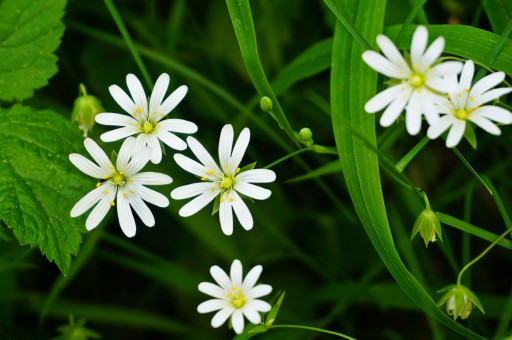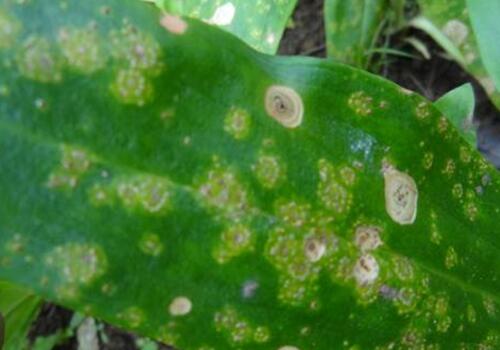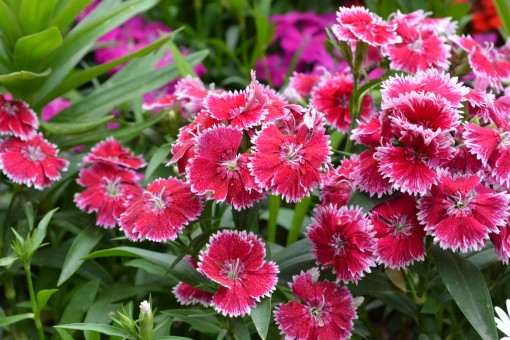Are the stars poisonous? When do they usually bloom? Can I keep it indoors? How?
Star flower, also known as five-star flower, umbrella flower, star flower, etc., is a common flower in the tropics. It is deeply loved by flower friends because of its diverse colors and flowers like five-pointed stars. It is now widely used in potted plants, flower beds and other landscape areas. Is the star flower poisonous? When does it usually blossom? Can I keep it indoors? How do you raise it?

Is it poisonous?
Non-toxic, its flowers have pink, scarlet, peach and other colors, look really colorful, so they are widely planted by many flower lovers and raise a pot in their own yard or room, which can not only add color, but also effectively purify our air and let our body and mind get a healthy experience. Therefore, it is a good ornamental flower, not only non-toxic, but also useful.
Flowering time:
Star flower is a kind of perennial grass flower with persistent roots. it can withstand not only drought but also high temperature, so its flowering period is longer. Generally speaking, its flowering period is from March to October, which lasts for eight months. So its flowering period is quite long.
Can I keep it indoors?
It can be put in the indoor bedroom. It is not only beautiful but also can purify the air in our room, make our room extremely fresh, decompose some harmful objects, filter out effectively, and bring a clean resource to our breathing. Therefore, its purification effect is not to be underestimated.
Culture techniques:
1. Pots: the flowers can be transplanted in pots 7-9 weeks after sowing. The suitable diameter of flowerpots is 10-15 cm, 1 seedling can be planted in 10-cm pots, and 1-2 seedlings can be planted in 15 cm pots. Before potting, appropriate fertilization should be applied to make the plant grow strongly so as to reduce the impact on the plant.
2. Medium: the peat soil with asepsis, slightly containing fertilizer and good drainage is used in the cultivation medium, and the pH value is 6.5-6.8, in order to avoid iron poisoning and magnesium deficiency. If the pH value is lower than 6.0, the plant will stop growing due to severe leaf edge cauterization due to iron poisoning.
3. Temperature: warm heat and sufficient sunshine contribute to the growth of starry flowers. During the growth period, the night temperature should be kept above 17: 18 ℃, the daily temperature should be above 22: 24 ℃, and the temperature below 10 ℃ will make the blossom irregular and delay or hinder the blooming of flowers.
4. Illumination: stars and flowers like the environment with sufficient sunshine. The stronger the light is, the tighter and stronger the plant is. Therefore, in the winter of weak light and short sunshine, we should pay attention to replenishing the light.
5. Moisture: the star flower is more resistant to drought, but not resistant to water and moisture. During the growth period, excessive watering should be avoided, and stagnant water in the cultivation medium should be avoided so as not to induce root rot. When watering, the water temperature should not be too low (that is, the water temperature should be consistent with the medium temperature). Excessive watering often yellowes the plant and slows the growth of flowers.
6. Fertilization: 800-1000 times of chlorophyllin was applied one week after planting, and it was watered every 7 to 10 days. When the plant enters the middle stage of growth (that is, the plant height is 8-10 cm), 800-1000-fold solution of "flowering essence" can be applied once a week to promote flower bud differentiation and growth.
Matters needing attention in the cultivation of starry flowers
The main results are as follows: 1. After planting, the plant can pick the heart once when it has 3 or 4 pairs of true leaves, so as to make the branches neat and blossom consistent.
2. Star flowers can be picked only once. If the flowering time is expected to be too early, the heart can be picked twice, and the flowering will be delayed for 10-12 days each time.
3. The cultivation time of 10 cm flowerpot and 15 cm flowerpot is 110-120 days and 120-140 days respectively.
Time: 2019-04-08 Click:
- Prev

Herbaceous plant Gentiana leaf rust, root rot, aphids and other major diseases and insect pests and control measures?
Gentiana macrophylla, alias Gentiana macrophylla, perennial herb, is one of the main drugs for the treatment of rheumatic arthralgia, tuberculosis, hot flashes, jaundice and so on. That herbaceous plant Gentiana leaf rust, root rot, aphids and other major diseases and insect pests and control measures? Let's learn more about it.
- Next

Is it Carnation? Is it poisonous? Can I keep it indoors? How? When do they bloom?
Lycopus arundinacea, also known as Luoyang flower, Shizhu flower, etc., is a traditional famous flower in China. Because of its diverse colors and the ability to absorb harmful gases such as chlorine and sulfur dioxide, many people like to keep it indoors.
Related
- Fuxing push coffee new agricultural production and marketing class: lack of small-scale processing plants
- Jujube rice field leisure farm deep ploughing Yilan for five years to create a space for organic food and play
- Nongyu Farm-A trial of organic papaya for brave women with advanced technology
- Four points for attention in the prevention and control of diseases and insect pests of edible fungi
- How to add nutrient solution to Edible Fungi
- Is there any good way to control edible fungus mites?
- Open Inoculation Technology of Edible Fungi
- Is there any clever way to use fertilizer for edible fungus in winter?
- What agents are used to kill the pathogens of edible fungi in the mushroom shed?
- Rapid drying of Edible Fungi

